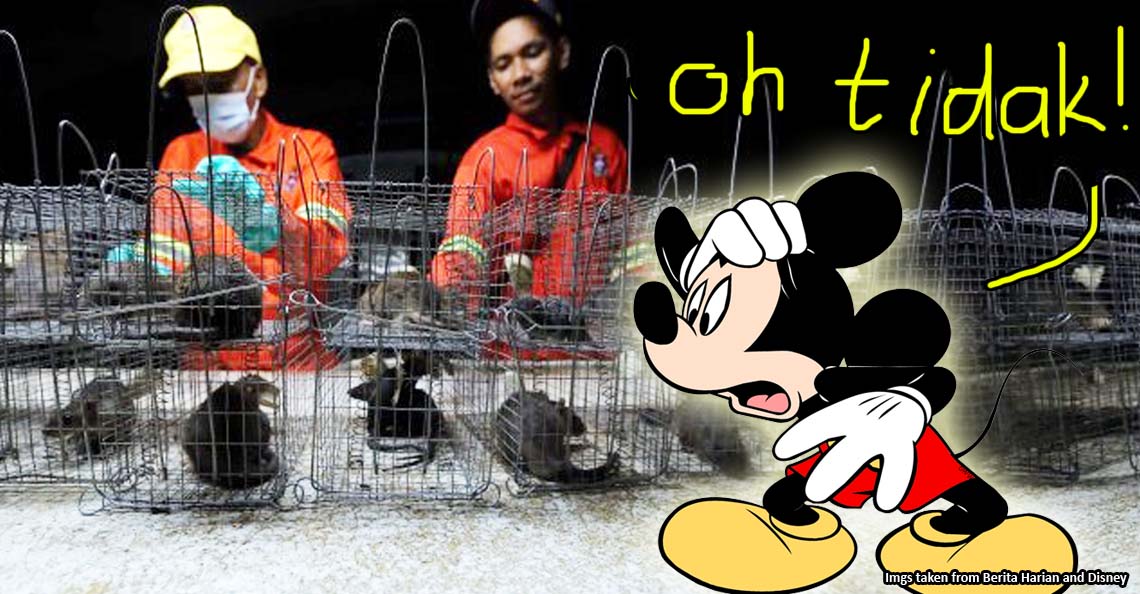A 72 year old Malaysian uncle might’ve created a solution to the world’s trash problem

- 11.6KShares
- Facebook11.0K
- Twitter44
- LinkedIn37
- Email105
- WhatsApp413
Most of us probably know that plastic waste is a huge problem, but we dare say that it’s going to take a lot more than banning plastic straws to fix that.

New plastic products are made each day, but the old ones never really go away. They just pile up somewhere, like a landfill or the ocean, and just break down into ever smaller pieces. Burning them is problematic, and recycling them is highly inefficient. Therein lies the issue.
Plastic is ridiculously easy to make, but ridiculously difficult to get rid of.
But what if you can just shovel them all into a magic machine that practically runs on its own and turn them into ash? Sounds about as unrealistic as the Harry Potter series, but the machine apparently exists, and it’s all science. And perhaps best of all, it’s a Malaysian invention!
Meet the Asher:

That pizza-oven-looking appliance is actually a machine that bakes trash using hot plasma without releasing harmful gases, and for smaller versions, you don’t even need to plug it in: they run on solar, so they can work practically anywhere, like on a small island or even in the middle of a landfill.
Wah, is this an MLM pitch? Sounds very unrealistic and buzzwordy! Since it’s invented in Malaysia, we decided to pay the inventor, a Mr Roland Tee, a visit and check it out.

Roland is a retired auditor who has since went into the water purification business. Sometime in 2009, he remembered seeing news reports about incinerators in Malaysia. He realized that since they cost a lot to run, most have turned into white elephants.
With time on his hands, he decided to do something about this problem and invented the Asher, a machine that turns almost all kinds of garbage you put into it to ash. Here’s a video if you want to see it in action:
Together with Pang Swee Lei, executive director of Pamarai Sdn Bhd (the Asher’s sole distributor), they experimented and developed the machine to the version it is today. But you might be asking yourself…
Isn’t this machine just a glorified incinerator?

Burning produces ash, so this Asher thing must be another incinerator, right? Well, not exactly. Perhaps the biggest difference is that incinerators use fuel like diesel to burn waste, but the Asher does not use up any fuel but the trash fed into it. According to Ronald Roland , for incinerators, as much as 300 liters of diesel may be needed to process one ton of waste. Not that incinerating is a bad thing – countries like Sweden managed to make it work for them – but the Asher only needs a small fire to start up, then it just… runs until all the trash is processed.
It sounds like wishful thinking, but inside this machine that’s slightly bigger than an SUV, there are some weird scientific applications that defy common sense. Pang told us that the machine uses a combination of plasma and a special refractory chamber. Plasma is a fancy word for ionized gas, which can be said to be supercharged gas for lack of a simpler term. A refractory chamber, on the other hand, is a chamber made of refractory (heat-resistant) material.

So the chamber’s refractory material is a special invention of Roland’s, and it seems to take the heat from the initial fire and store it, using it to heat up the chamber. This heat is released into the incoming trash, which releases more heat, which gets stored by the walls… you get the idea. It’s a cycle that continues as long as you feed trash into the machine.
As for the plasma, Pang told us that it was generated by directing outside air into the chamber through a strong built-in magnetic field, which ionizes the gas. We sort of missed the function of this, but we guess that since plasma particles have more energy than gas particles (the same way gas have more energy than liquids), plasma can gain even more energy from the heat of the walls, turning the chamber into a sort of super oven that can reach up to 1,000°C (1,600°C for the bigger models).
This combination makes it possible for the Asher to use as little fuel as it needs to light a cigarette (or some newspapers) to continuously generate intense heat for months on end, as long as there’s trash and air. Under the extreme heat of the chamber, the trash undergoes a process called pyrolysis, which is when stuff breaks down from heat in a non-reactive environment into its chemical components.
Some of these chemical components emerge as gas, and this leads us to the Asher’s second innovation – the resulting gases are passed through an elaborate filtration system that removes most impurities before being released back into the environment, which they claim results in a smoke stack that basically just outputs lukewarm steam.

As for what comes out of it…
The Asher claims to create virtually no waste
The machine is said to reduce the volume of trash that goes into it to only 4%, so if you put in 100 kilograms of trash, you’ll get around only 4 kilos of ash. But even that little bit of ash can be re-used, for example, as fertilizer. In some places where the Asher have been deployed, the ashes are mixed with sawdust and sold as organic fertilizer.
As for whether it’s safe to use as fertilizer (the Asher can also be used to process e-waste), Pang told us that based on their test results for various types of feedstock (the trash that gets processed), the ash complies to EPA standards.

However, they clarified that there are two types of fertilizer, for landscaping (ornamental plants or grass) and for agriculture (making food). For landscaping, there should be no problem, but for producing food, Pang said that they would advise the clients to recognize the type of feedstock processed through the Asher. They did note, however, that based on the tests done on the ash fertilizer and the resulting vegetables, everything’s fine on paper.
“Ethically, I think that we should be more sensible because we do not want waste from diapers or plastics to be the fertilizer for your food. But if it is organic waste like your typical kitchen waste, those are straightforward for your gardening and farming.” – Pang Swee Lei, to Cilisos.
Besides nourishing plants, the ash can also be used as a cement substitute, as it has binding properties. They showed us a brick made from a mixture of 20% ash and 80% sand, and… it looks like a regular brick.

They haven’t done loading tests on these bricks yet, so they’re unsure of whether it’s safe to build houses with. However, they believe it would be fine for non-loading structures, like pavements and benches.
As for the filtration system, Roland told us that once you change the filters (about every six months), you can just chuck the used filters into the Asher to be processed (!), and the water used to process the emissions are all treated within the machine itself, without being released to the environment. In short, the machine claims to turn EVERYTHING (except metals and glass) into just organic ash and steam. We know, so far, it defies common sense. Almost too clean a solution for a world crisis, even.
UPDATE (17/7,2019): One reader, Allan Teo, has commented about a similar device called the BlackHole from the US. From what we can see, it operates very very similarly, but has a much larger footprint, which might affect its viability as a distributed solution.
So if it’s so good, why isn’t Malaysia using this all over the place already? Well, it sounds silly, but as Roland had claimed, one of the obstacles facing its implementation had been that…
The gomen doesn’t even know how to classify the Asher

Among other things, anyway. From what we’ve learned from Roland and Pang, as many as 50 units have already been deployed around the world, and not just in Malaysia. And so far, they have been claimed to be successful. But perhaps it’s not as popular as it should be as it’s a very new invention, with Roland having came up with a commercially-viable version in 2016.
Over the span of the next two years, thanks to a more formal way of marketing, promoting and distributing, 50 units have been deployed in 13 countries. In Malaysia, 9 units have been deployed, to a mixture of both private and government bodies. However, Roland admits that it’s not easy for the Asher to gain traction in Malaysia.
For one thing, in contrast to other countries where the Asher is successful, we already have a pretty solid waste management system. We don’t usually walk out our doors and see mountains of rubbish everywhere, except maybe if you live near a landfill. So maybe the need for the Asher is not immediately obvious.

However, Pang had said that their machines, which costs around half a million ringgit each, can really reduce the costs needed to manage waste. Pang said that tonne-for-tonne, the Asher can be up to 80% cheaper than the other technologies out there such as incinerator, waste-to-energy, anaerobic digester, biogas and gassification.
“At the moment, there is a cost for collection of waste, cost to transport waste to the transfer station, cost at the transfer station and cost to truck waste to the landfill. If we can install a unit at, say, a high density area and have the residents bring their rubbish to The Asher, the government will be able to cut out all the cost above,” – Pang Swee Lei, to the Star.
Roland also cited problems with bureaucracy, like him not being able to afford the required (and expensive) Environmental Impact Assessments (EIA) for every place that he wants to deploy the Asher, and his machine not falling into a clear category in the Environmental Act.
“Even now in Malaysia, the environment law… They do not know where they would place me in: I’m not an incinerator, I’m not an oven… so, they don’t know where to put me.” – Roland Tee, to Cilisos.
Still, the Asher seem to be slowly gaining traction in Malaysia, and they hope that one day, the government can support their invention, which is 100% Malaysian.
“Obviously, one day, when we are fully supported by our own government, this can put Malaysia on the world map as we are the global solution in terms of waste management.” – Pang Swee Lei, to Cilisos.
So will we be looking at more Ashers in Malaysia soon? Well, maybe. Roland was told that the Asher might be reconsidered once the government amends its Environmental Act next year, but even without the wait, it’s nice to know that you’re never too old to try to save the world.
A special thanks to AMP Group PLT, the Asher’s official resellers for arranging this interview. If you have enquiries about the Asher or want one, they can be contacted at IWantAsher@ampgroupplt.com.
- 11.6KShares
- Facebook11.0K
- Twitter44
- LinkedIn37
- Email105
- WhatsApp413



